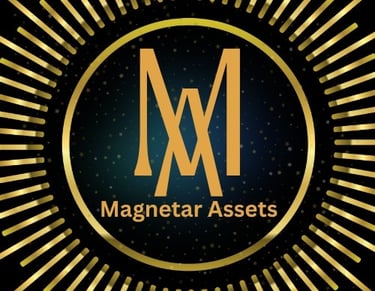Oct 08
Living Luxurious in the USA
Posted at 19:13 in USA Insights by Miesha
What Counts as “Luxury Real Estate”
“Luxury” or “ultra-luxury” homes aren’t just houses with high price tags. In 2025, there are clear, evolving criteria that separate standard high-end homes from the truly luxury tier:
Price & Location: Homes in very desirable neighborhoods: beachfront, waterfront, ski resorts, affluent suburbs, or prestigious city enclaves. Luxury often means $1 million+, and ultra-luxury is more like $5–10 million+, depending on the region.
Amenities & Design: Features like spa-like bathrooms, private gyms, pools, wellness rooms (saunas, steam rooms), large outdoor/luxury outdoor kitchens, resort-style common amenities. Attention to materials, finishes, design pedigree matters.
Technology & Security: Smart-home systems, AI-integrated tech, advanced security, privacy (gated estates, biometric access) are expected.
Sustainability & Wellness: Eco-friendly construction, energy efficiency, wellness-oriented design (light, air, views, connection to nature) have moved from “nice additions” to core features in many luxury homes.
Lifestyle & Experience: Luxury buyers increasingly want “experiential” living—views, privacy, access to nature, scenic outdoor spaces, resort‐style living, branded residences (with hotel-like services).
Key Markets & Hot Spots
Some U.S. areas are leading in luxury real estate, both in terms of demand and price growth:
Region
What’s Attracting Buyers / Why it’s Hot- Florida (Miami, Palm Beach, coastal markets): Favorable tax laws, waterfront living, tropical lifestyle, strong international interest. Ultra-luxury sales are doing very well.
Los Angeles / Southern California: Iconic estates (Bel Air, Beverly Hills, etc.), celebrity homes, strong architecture culture; ocean views. High average prices.
New York City / Hamptons: Classic prestige, demand for both urban high-rises and coastal estates. Manhattan still strong in luxury segment performance.
Phoenix / Scottsdale: Growing high-end developments; people drawn to desert climates, relatively more affordable luxury vs coastal CA/NY.
Houston, Texas: Substantial luxury inventory, strong demand in certain neighborhoods (e.g. River Oaks) coupled with more value relative to coastal markets.
Resort / Secondary Luxury Markets (Aspen, ski regions, lakefronts, etc.)Buyers want escape, privacy, views; these markets tend to have more inventory challenges so prices can jump.
What’s Driving Demand / Trends in Luxury Real Estate (2025)
Here are the main trends shaping the high-end market now:
Scarcity & Inventory Constraints
In many luxury markets, there’s simply not enough inventory. Homes in the $1M+ range are growing in demand faster than supply. Limited supply drives up prices.All-Cash / High Liquidity Purchases
Wealthy buyers are less reliant on financing; many luxury transactions are done in cash to avoid interest-rate exposure and get faster deals.Branded Residences & Full Service
Collaboration between real estate developers and luxury brands (hotels, fashion, etc.) to build residences with concierge, five-star amenities, and prestige branding.Wellness, Privacy, and Outdoor Lifestyle
Increasing focus on wellness design (saunas, spa bathrooms, meditation/wellness rooms, clean air, nature). Outdoor living spaces (patios, gardens, decks) are as important as interior.Technology & Smart Homes
Integrated systems: home automation, security, energy management. Even virtual and augmented reality for touring properties.Sustainability
Eco-friendly materials, energy efficiency, green certifications (LEED etc.), renewable energy sources are more demanded in luxury homes.Emerging / Secondary Luxury Markets
Buyers are shifting toward markets outside of traditional luxury hubs for more space, better value, better lifestyle. Think resort towns, less dense cities, markets with tax advantages or natural beauty.
Risks, Challenges & Things to Watch
Luxury real estate is lucrative, but not without specific risks:
Interest Rate Sensitivity: Even wealthy buyers feel the pinch of high mortgage rates, especially if they finance at all. Rising rates can dampen demand or make large financing less favorable.
Market Volatility / Wealth Fluctuations: Luxury buyers often depend on stock market or business performance. Economic downturns can affect the luxury market sharply.
High Carrying Costs: Maintenance, property taxes, insurance (especially in flood zones, coastal areas, wildfire risk) can be very large. These costs might be underestimated.
Regulatory & Zoning Issues: Restrictions on land use, environmental regulations (especially in waterfront or coastal zones), historic preservation, etc. can complicate or limit development.
Liquidity: Luxury properties can be harder to sell quickly, especially in less traversed markets. Finding buyers for ultra-high-end homes can take time.
What This Means for Buyers & Investors
If you’re considering getting into luxury real estate — either to buy a home for yourself or as an investment — here are some takeaways:
Know the niche: Whether you want coastal, urban, ski, or wellness-oriented, focus on what you value most and what demands are in that niche.
Visit in person / vet the location: Even luxury properties depend heavily on their setting — views, access, privacy matter vastly.
Demand for modern amenities: Being behind in home tech, wellness or sustainability can reduce appeal. Even among luxury buyers, expectations are rising.
Consider the total cost of ownership: Maintenance, taxes, insurance, renovations. Sometimes these can make a property much more expensive than just the purchase price suggests.
Market timing & financing: If financing, try to lock in favorable terms; if buying for investment, assess resale potential and demand in the area.
Please email us for further information:
miesha@magnetarassets.com
Magnetar Assets LLC
© 2025 Copyright Magnetar Assets LLC |
